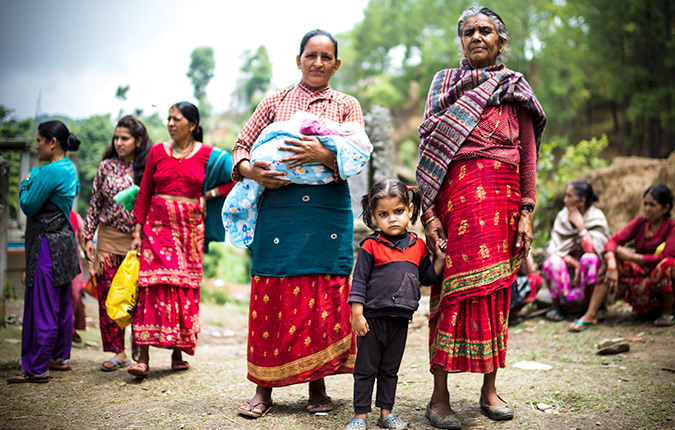Humanitarian Action and Disaster Risk Reduction

The Asia-Pacific region is one of the most disaster-prone regions in the world, and home to nine of the top 15 countries most vulnerable to disaster impacts[1]. In the past decade, the Asia-Pacific region accounted for 41 per cent of all disasters worldwide, and over 90 per cent of all global deaths from disasters[2]. The region is also home to a number of protracted crises, which, when combined with the effects of natural disasters, give rise to complex humanitarian emergencies. Yet the impacts of disasters and crises are not gender-neutral, and global evidence increasingly shows that when disasters strike and humanitarian crises unfold, women and girls bear the brunt of the impact.
Prevailing gender inequalities in the Asia-Pacific render women and girls more vulnerable to the impact of disasters. Among many detrimental impacts, women and girls experience higher mortality, exclusion from humanitarian services and decision-making processes, increased levels of gender-based violence, and loss of livelihoods. Women and girls with intersecting identities face further challenges, with women and girls with disabilities often abandoned or left behind during evacuation in disasters, and transgender women often excluded entirely from humanitarian aid due to stigma, discrimination, and lack of legal protections.
At the same time, women and girls are not just victims of disasters and crises, but active agents of change. Women are often the first responders to crises, and are integral to the survival and resilience of families and communities. In disaster preparedness, response, and recovery, women's leadership and capacity as agents of change represents an untapped resource. When women are meaningfully engaged, and their needs are directly addressed, humanitarian action is more efficient and effective, the transition to recovery accelerated, and community-wide resilience is enhanced[3].
A joint study by UN Women and the Institute of Development Studies shows that recognizing and addressing the differing needs, vulnerabilities, and capacities of women, girls, men, boys, and persons of diverse gender identities in humanitarian programming isn't just the right thing to do - it is also the smart thing to do. Gender equality programming improves access to services, increases the effectiveness and inclusiveness of humanitarian outcomes, and reduces gender inequalities - making humanitarian settings an ideal site for building back better.
UN Women's Approach

At the heart of UN Women's mandate in humanitarian action and disaster risk reduction is ensuring equality between women, men, and persons of diverse gender identities as partners and beneficiaries of humanitarian action. Globally and in the Asia-Pacific region, we leverage our triple mandate —normative, coordination and operational – towards ensuring that gender equality and women's empowerment are systematically integrated across coordination, planning, implementation, and monitoring of disaster risk reduction, resilience building, humanitarian response, and recovery.
In pursuit of this mission, and guided by global norms and standards and UN Women's Humanitarian Strategy, the UN Women Regional Office for Asia and the Pacific works to promote gender equality and women's empowerment in humanitarian efforts through four mutually reinforcing strategies across the spectrum of disaster risk reduction, response, and recovery:
- Coordination and Leadership
- Capacity Development
- Mainstreaming Gender into Data, Analysis, and Advocacy
- Targeted Programming
- UNU-EHS and the Alliance Development Works (2014). World Risk Report 2014 - Focus: The city as a risk area.
- Centre for Research on the Epidemiology of Disasters. EM-DAT: The International Disaster Database.
- UN General Assembly (2016). Outcome of the World Humanitarian Summit. A/71/353.